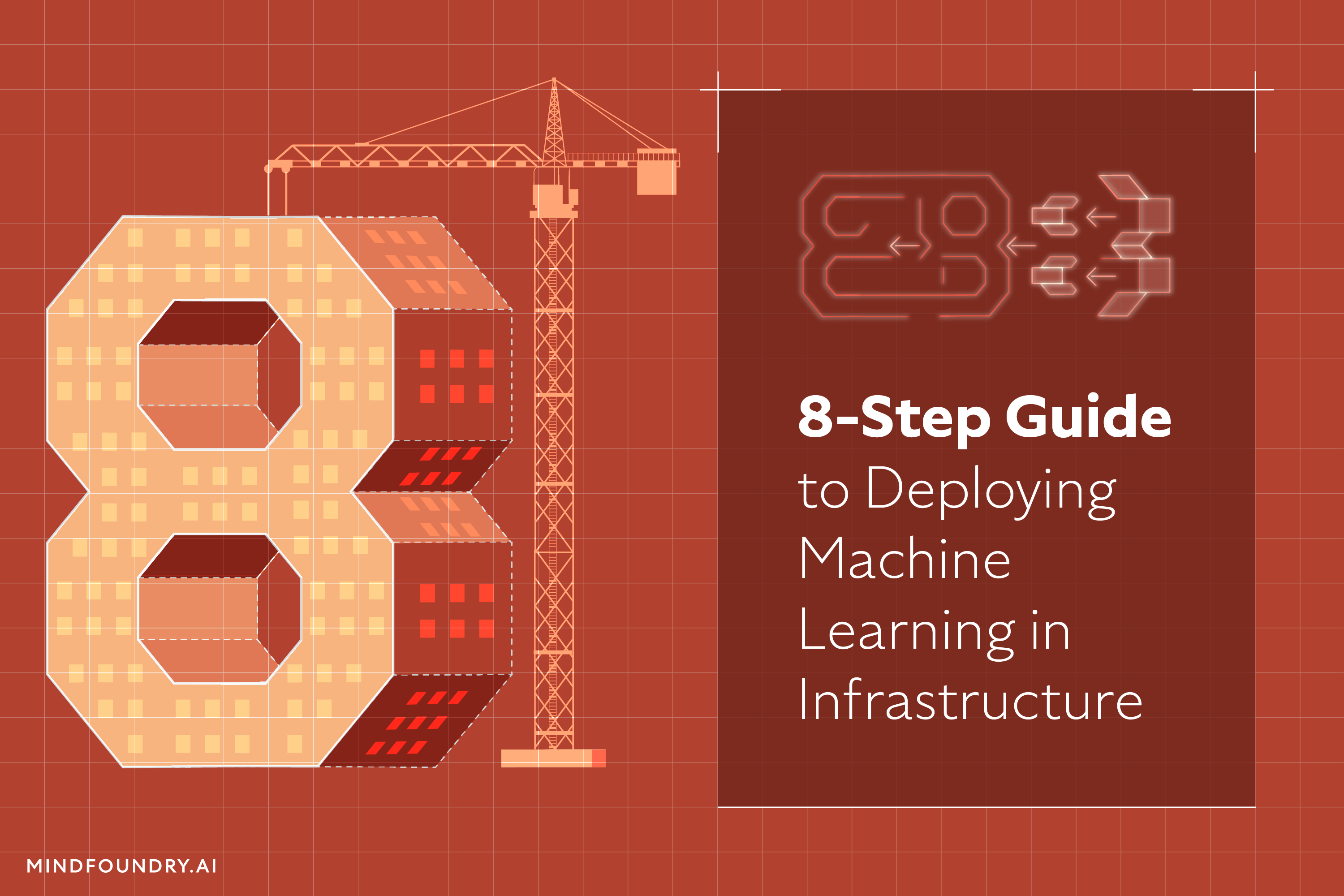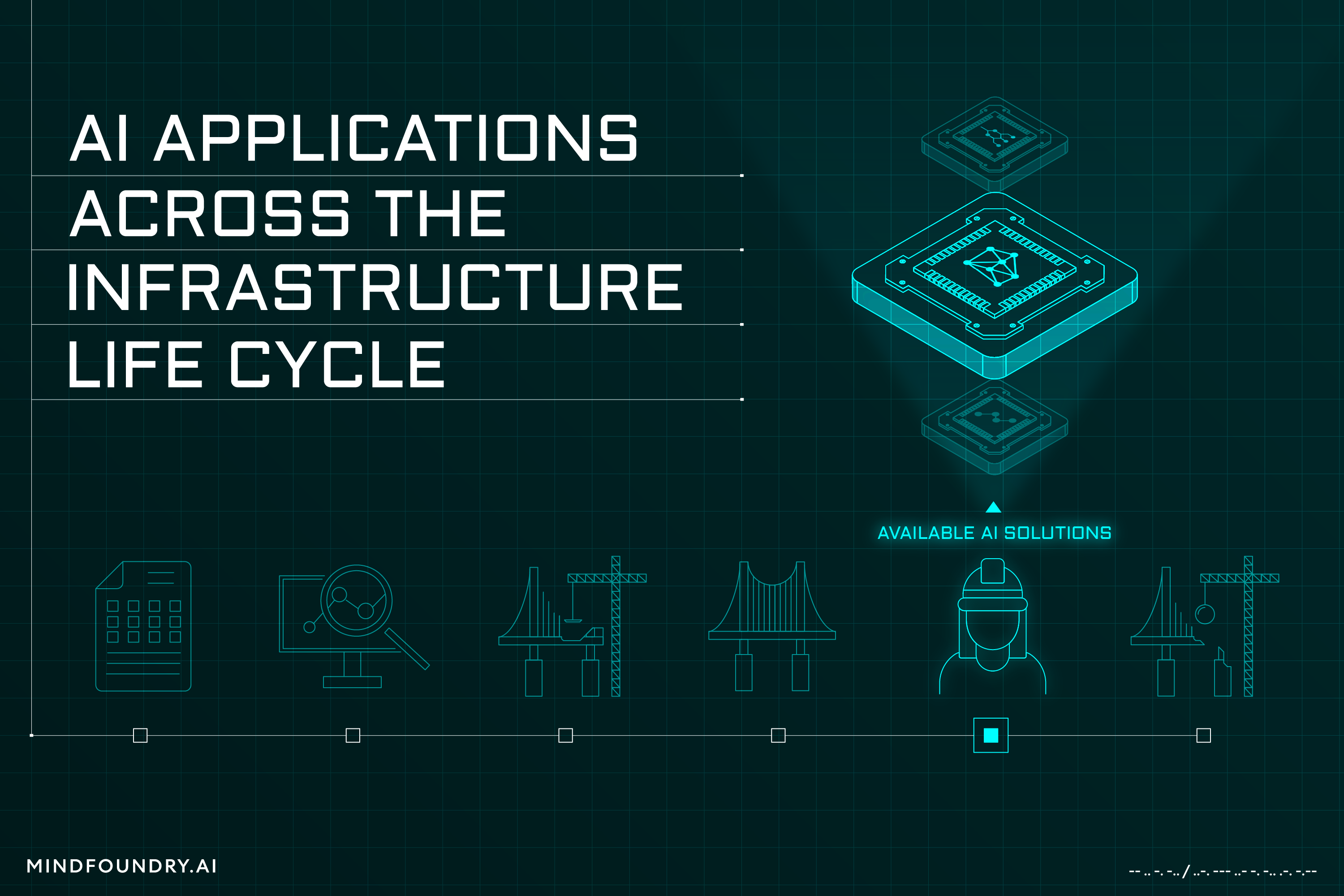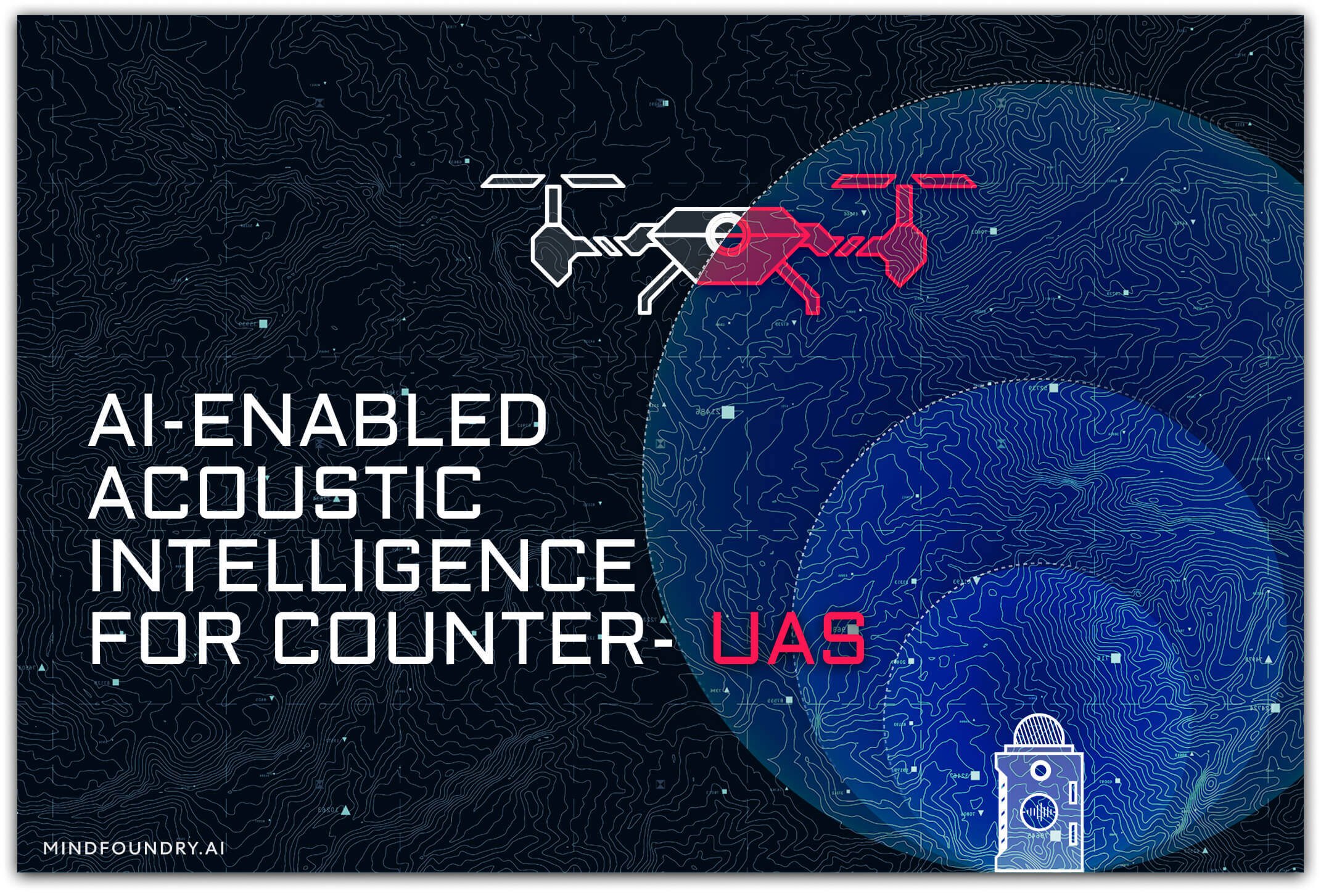AI Applications Across the Infrastructure Life Cycle
From planning to decommissioning, every stage of the infrastructure asset life cycle has its own priorities and needs. Here are the ways that AI can...
4 min read
 Tom Bartley
:
Jan 10, 2025 11:24:28 AM
Tom Bartley
:
Jan 10, 2025 11:24:28 AM

As is the case in many industries, those responsible for managing and maintaining our civil infrastructure are exploring opportunities to augment their work with AI and Machine Learning. However, achieving this requires specific considerations, clear strategies, and an understanding of what AI can and cannot do. With our 8-step guide, infrastructure managers and civil engineers can build, deploy, maintain, and scale their AI effectively and responsibly.
To explore these steps and gather more insights into how AI can benefit the Infrastructure sector, download our whitepaper.

Deploying AI in an organisation reflects the AI lifecycle, which is a continuous process from the moment the use case is explored to the moment a model is retired. Each stage requires bringing together people with different expertise to ensure a successfully built and deployed AI system.
Step 1: Identifying the Problem Space and Defining the Use Case
The first stage of the AI lifecycle is crucial as it informs all the other steps and will answer whether AI is the right tool to help solve the problem you have identified. It will usually be led by a digital transformation manager, product manager, project manager, and/or solutions engineer who will be the expert on the use case and responsible for progressing the project throughout the AI lifecycle. This stage provides the space to explore and understand the current business problem and the pain points to be solved.
This stage's output should be a strong understanding of what this digital transformation project entails and an assessment of whether AI is the best solution to solve the problem.
Step 2: Responsible AI Workshop
Now that you have a clear understanding of the problem and solution space, it’s time to conduct a responsible AI workshop involving participants with a variety of experiences and perspectives. The output of this workshop is ideally an AI risk register. This is a document tracking possible risks, their mitigation strategies, and assigned responsibilities. The project owner and others responsible for risks should update this document throughout the project.
This register is essential for addressing the moral responsibility of ensuring the system’s implications are understood and mitigated, especially in an industry that impacts people’s lives, like civil infrastructure.
Step 3: Data Collection and Preparation
Data scientists and machine learning scientists should work with project owners to gather the necessary data, whether internal, third-party, or newly labelled. Once collected, the data may require cleaning and preparation for model building, for example, addressing missing values and creating new features. Data collection and preparation can also be performed simultaneously to ensure the data meets technical and project requirements. Feature engineering is an essential part of this stage as it enables the extraction of meaningful characteristics from the data. Features with limited predictive power are refined or replaced to enhance the model’s performance.
Step 4: Feasibility Exploration
After collecting and preparing data, feasibility exploration ensures that the data aligns with the AI solution. This step involves further data exploration and initial modelling to validate technical feasibility. Involving the IT team at this stage is crucial to address potential challenges that often arise when integrating machine learning solutions into existing and legacy systems.
Step 5: Model Training, Evaluation, and Validation
Once feasibility has been established, it’s time to build and train the model. This stage is usually led by machine learning scientists; however, it will require close collaboration with the project owner so they understand the project requirements and can integrate them into the model-building process. Machine learning scientists will need to choose the right model to use based on the type of problem being solved, the data available, and the required level of interpretability. The model is trained by feeding it a dataset and optimising its outputs to match the expected results. Evaluation metrics are then used to validate the model’s performance. The training and evaluation stages are repeated until the model meets the desired performance standards.
Step 6: Machine Learning Operations, Model Deployment, and Maintenance
Once the model has been sufficiently trained to achieve the desired level of performance, you’re ready to bring the AI system into production. Depending on the organisation, deployment may be handled by machine learning engineers, software engineers, IT, or operations teams. Models can be deployed as API endpoints, integrated into existing software, or developed as standalone systems requiring a custom interface.
The use case requirements dictate where the model is deployed, whether on the Cloud or edge devices. For example, if a drone is flying around an asset in a rural area to capture images of defects, the speed at which the drone identifies defects is crucial, and an internet connection may not be guaranteed. It should be noted, however, that edge deployment introduces additional engineering challenges which require careful consideration.
Step 7: Human-AI Interface and Experience
Designing a suitable human-AI interface is crucial for successful AI system adoption. The interface determines how users interact with the system, ensuring that decisions remain human-driven. The process starts by identifying the target users. Presenting the right amount of information to these people is key to system usability.
Additionally, interfaces must clearly frame model accuracy to help users make informed decisions, as most model predictions aren’t 100% accurate. Human-AI interaction is about how users engage with the model output, and enabling the user to correct and provide feedback to the model is crucial to enabling it to improve continuously over time.
Equally, it is important to empower humans to make confident decisions in AI systems. Automation bias is a phenomenon in which humans tend to over-rely on an AI system’s decisions, even though they are more knowledgeable than the AI. This is especially common when the user must repeatedly verify a model output in the same format and goes into “auto-pilot” mode. Designing a system that puts human decisions first is crucial.
Step 8: Continuous Metalearning
Continuous Metalearning is a technological capability that allows AI models to optimise their learning process and adapt to changes in the real world. It offers protection from the risks associated with misaligned AI and enables models to improve over time. Once the model has been deployed to production, it will be actively assessed for a couple of months. When confidence in the model and AI system has been earned, model maintenance can be performed on an ad-hoc basis, and changes can be made when necessary. Building responsible and transparent AI systems and including AI-in-the-loop to gather continuous feedback can also facilitate timely model monitoring.
Studies have shown that 91% of machine learning models degrade over time. This can be due to two things: model drift and data drift.
Model drift occurs when the relationship between the input data and the target value changes in some way, potentially making the model inaccurate or unreliable.
Data drift occurs when the distribution between the inputs of a machine learning model changes, which can cause the model to perform poorly.
Continuous Metalearning can mitigate these two effects by enabling the auto-retraining of a model to adapt to changes in the environment or respond to human feedback provided on the model output.
By following these steps, those responsible for managing our civil infrastructure will be able to adopt AI in a safe, reliable, robust, and continuously performant manner. In the age of degradation, where so many of our built assets are approaching a critical juncture in terms of their condition, successful AI adoption could hold the key to ensuring the longevity of our built environment.
To find out what civil engineers need to about AI and Machine learning to build the future, download our whitepaper.

From planning to decommissioning, every stage of the infrastructure asset life cycle has its own priorities and needs. Here are the ways that AI can...

Unmanned Aircraft Systems (UAS) are now a staple of modern warfare, now responsible for 60% of targets destroyed in the Ukraine-Russia war....

In Defence and National Security, mission-critical data often emerges from a multitude of different sensor types. With AI, we can bring this...